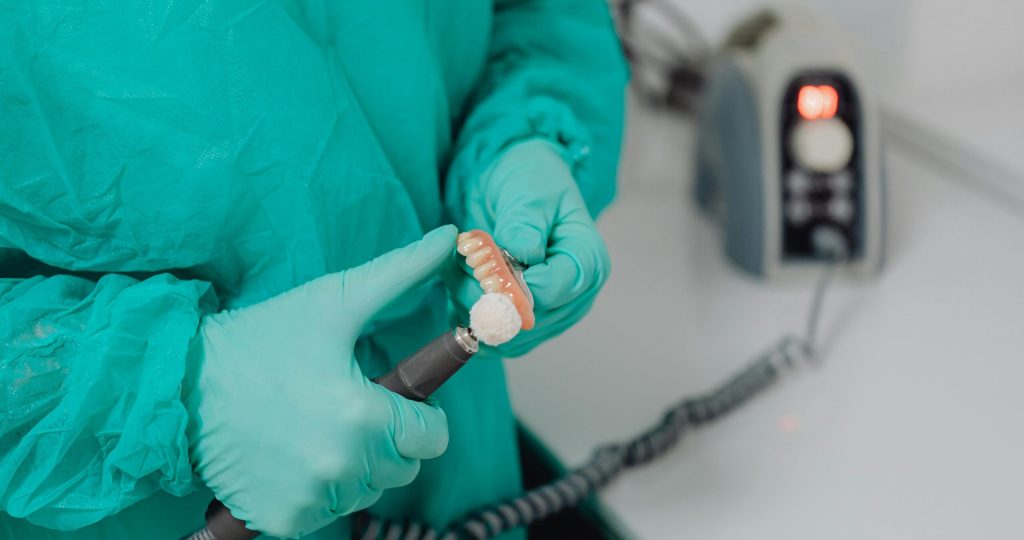Written By Yogita Bhadane B.Pharm
Reviewed and Fact Checked By Vikas Londhe M.Pharm (Pharmacology)

Lost tooth has been a challenge in oral healthcare since log time; it has been often treated with artificial replacements like implants or dentures. But what if an idea of re-growing tooth outside body became real? A recent study published in ACS Macro Letters brings this idea closer to reality by using advanced hydrogel-based matrix to grow tooth organoids miniature, a lab-grown versions of developing teeth.
Introduction: Why We Need Biological Tooth Replacement
Tooth loss can happen for many reasons, like decay, gum disease, injury, or illness. Missing teeth can hurt a person’s confidence, speech, and health. Current solutions like dental implants and dentures can replace teeth, but they cannot create real tooth tissue or fully restore how a natural tooth works.
Regenerative dentistry, a field focused on regenerating and repairing an oral tissue in event of damage by stimulating a body’s natural processes instead of merely replace it, is aims to fill this gap by creating bioengineered teeth using living cells and materials that mimic how natural teeth develop. A key step in this work is making tooth organoids, which are 3D models that copy how teeth grow.
Conventional Methods for Tooth Repair and Their Limitations
Traditionally, broken or missing teeth are fixed with; fillings and crowns to rebuild structure, bridges or removable dentures to replace teeth and dental implants that attach to the jawbone.
Although implants are widely used, they are not biological. They do not grow or heal and can fail due to infection or other issues. Also, implants do not interact with surrounding tissues like real teeth.
Attempts to engineer teeth in the lab
Researchers have tried to create teeth in the lab using materials like collagen matrix, decellularized tooth buds and synthetic polymers like PLGA, PGA, PLLA and Matrigel. However, these materials provide structure but lack tunable physical properties. Also they don’t provide enough information on how physical factors like stiffness affect tooth growth.
The New Approach: Engineering a Better Matrix for Tooth Growth
In this revolutionizing study, scientists created a tunable hydrogel system to help as a matrix to teeth grow. They modified gelatine and cross linked using the inverse-electron demand Diels−Alder reaction with specific chemical group’s in between Tetrazine (Tz) and Norbornene (Nb). By modifying the gelatine concentration (8% or 12%) and Tz: Nb ratio (1:1 or 0.5:1), they created hydrogels with different properties. These hydrogels were soft, able to swell, and stable for growing cells.
Tooth Organoid generation
To make tooth organoids, researchers took dental epithelial and mesenchymal cells from embryonic mouse tooth germs and mixed them into the hydrogel matrix to form cell pellets. They then cultured these cells in vitro for 8 days to form tooth organoids.
How Teeth were Regrown in the Lab
Three different hydrogel types were tested:
- GEL_8%_R05: 8% Tz: Nb ratio 0.5:1
- GEL_8%_R1: 8% Tz: Nb ratio 1:1
- GEL_12%_R05: 12% gelatin, Tz: Nb ratio 0.5:1
Only the GEL_8%_R05 group consistently produced well-structured tooth organoids that looked like natural teeth. The study showed that the softness of the hydrogel was important for the cells to self-organize into tooth-like structures.
Implications and Future Steps
This research is a big step for regenerative dentistry. It helps us understand how teeth develop and allows for customized hydrogels that can be used to study tooth formation.
Improved understanding of dental embryogenesis, by replicating the process in controllable lab conditions
Personalized dental therapies: In the future, patient-specific cells could be used to regrow teeth in customized hydrogels.
However Xuechen Zhang one of the researchers says that “We have different ideas to put the teeth inside the mouth. We could transplant the young tooth cells at the location of the missing tooth and let them grow inside mouth. Alternatively, we could create the whole tooth in the lab before placing it in the patient’s mouth. For both options, we need to start the very early tooth development process in the lab.”
Dr Ana Angelova Volponi, King’s College London, added that “as the field progresses, the integration of such innovative techniques hold the potential to revolutionise dental care, offering sustainable and effective solutions for tooth repair and regeneration.
Next steps of the research includes use of human cells to move towards clinical translation, testing how well these organoids grow over time, adding growth factors to guide development, and exploring the possibility of transplanting mature organoids into living models.
Conclusion
In conclusion, this study shows that the mechanical properties of hydrogels are important for developing tooth organoids in the lab. By adjusting the stiffness and make-up of the matrix, researchers were able to help cells communicate and organize themselves, closely resembling natural tooth development.
References:
1. Lab-grown teeth might become an alternative to fillings following research breakthrough, Kings College London, 14 April 2025, available from https://www.kcl.ac.uk/news/lab-grown-teeth-might-become-an-alternative-to-fillings-following-research-breakthrough
2. Zhang X, Contessi Negrini N, Correia R, Sharpe PT, Celiz AD, Angelova Volponi A. Generating Tooth Organoids Using Defined Bioorthogonally Cross-Linked Hydrogels. ACS Macro Lett. 2024 Dec 17;13(12):1620-1626. Doi: 10.1021/acsmacrolett.4c00520. Epub 2024 Nov 12. PMID: 39532305; PMCID: PMC11656705

